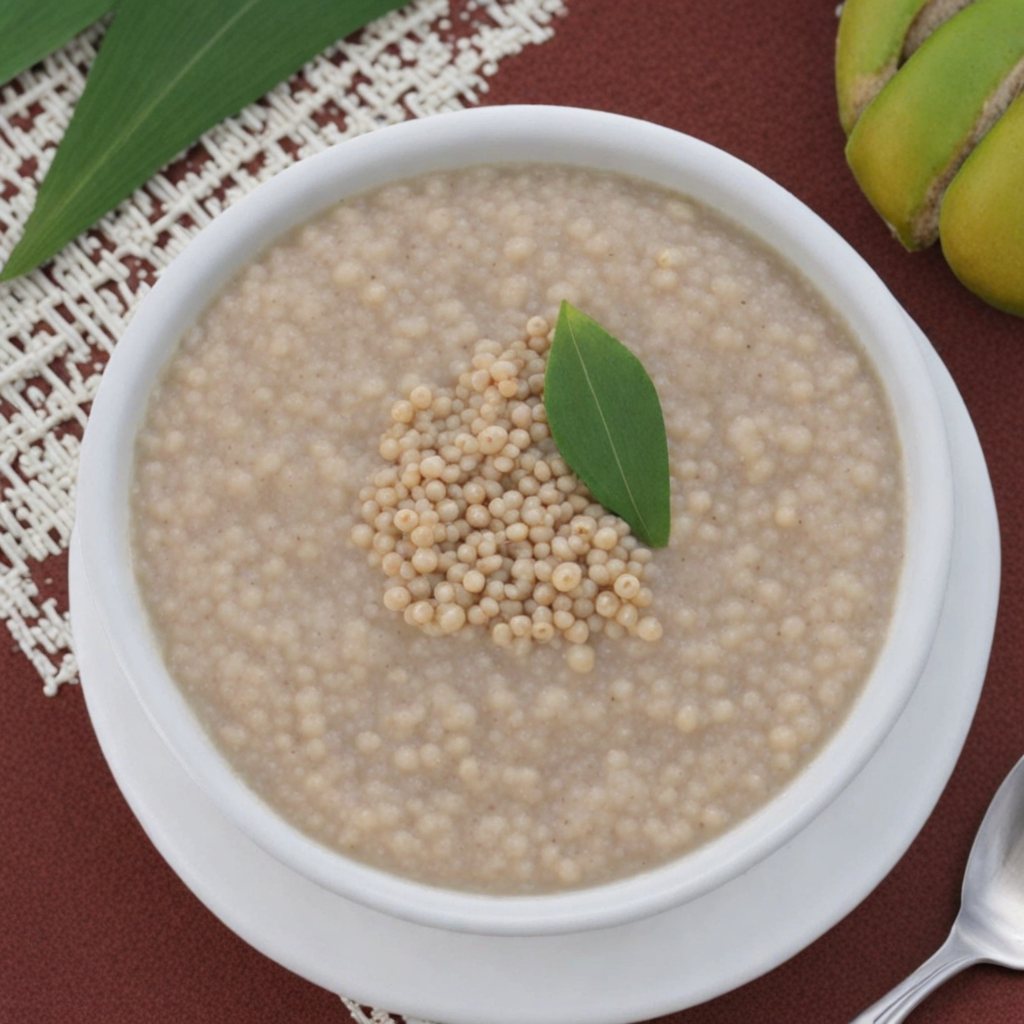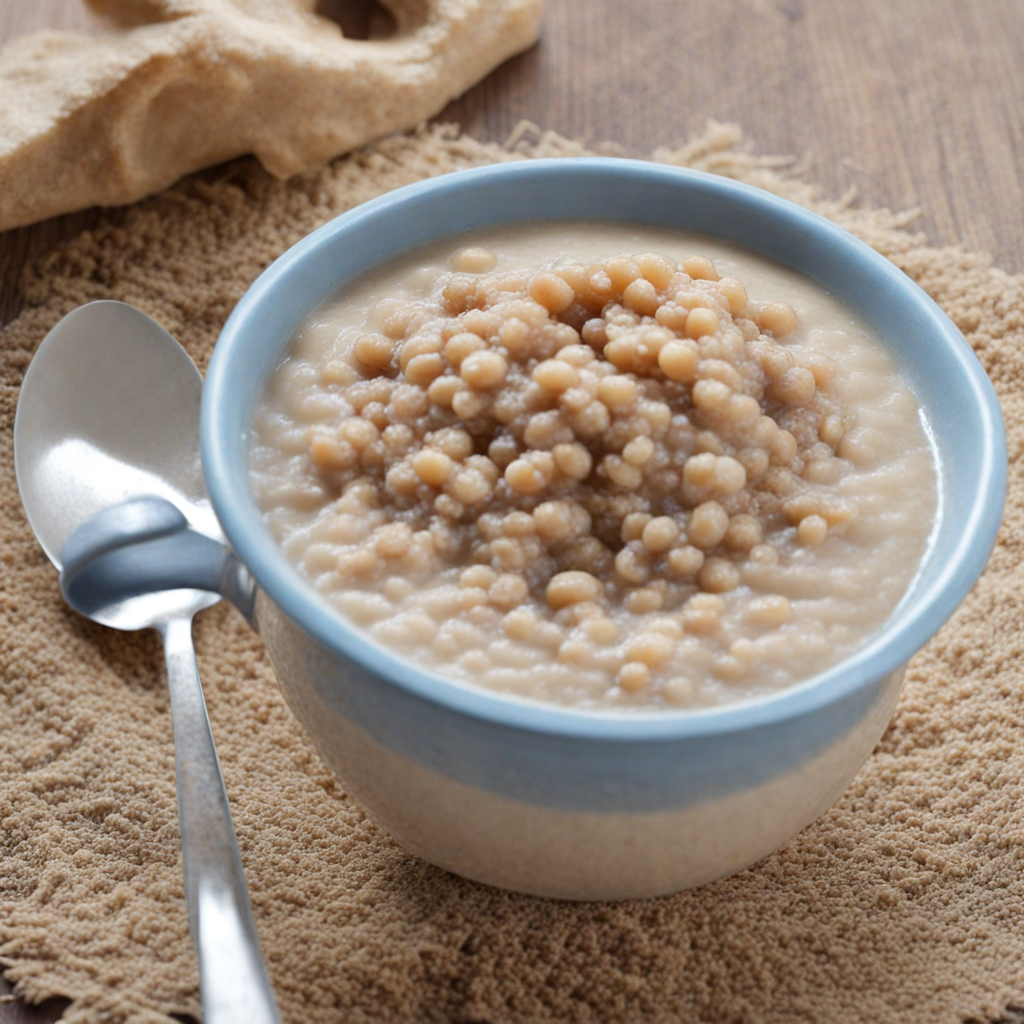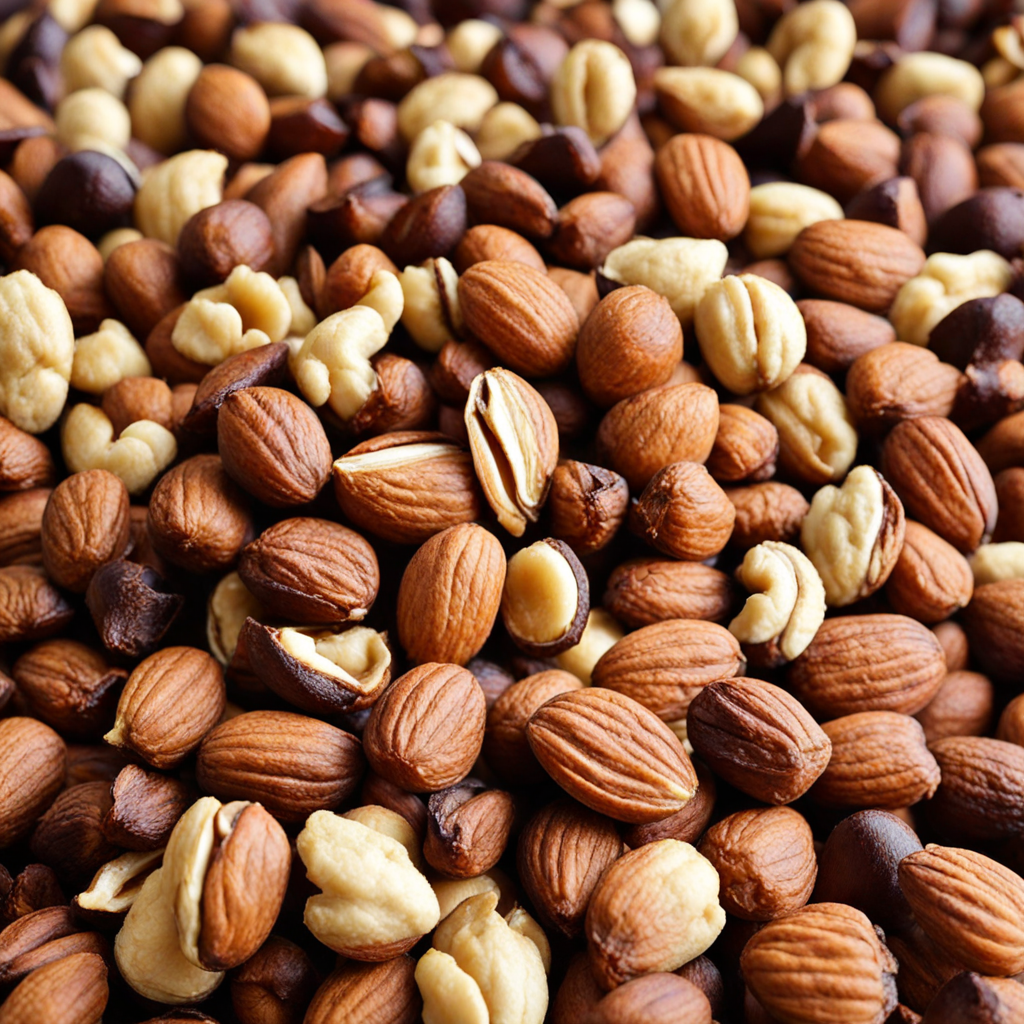Sorghum Porridge
Sorghum Porridge is a traditional dish from Eswatini, celebrated for its earthy flavor and nourishing qualities. Made primarily from sorghum grains, this porridge has a slightly nutty taste that is both comforting and satisfying. The grains are usually ground into a fine flour, which is then cooked with water to create a smooth, creamy consistency. This staple food is often enjoyed as a hearty breakfast or a filling side dish, making it a versatile choice for any meal of the day. In Eswatini, Sorghum Porridge is often enriched with local ingredients, such as milk or honey, enhancing its flavor profile and adding a hint of sweetness. It can be served plain or topped with seasonal fruits, nuts, or even a drizzle of syrup for an added treat. The combination of the creamy porridge and the crunch of toppings creates a delightful textural contrast, making each bite a unique experience. Its natural sweetness and wholesome ingredients make it a nourishing option for families. Beyond its delicious taste, Sorghum Porridge is also valued for its health benefits. Sorghum is a whole grain rich in fiber, protein, and essential vitamins, contributing to a balanced diet. This dish reflects the agricultural heritage of Eswatini, showcasing the importance of sorghum as a staple crop in the region. Whether enjoyed alone or as a complement to savory dishes, Sorghum Porridge offers a genuine taste of Eswatini's culinary traditions and is a wonderful option for those looking to explore new flavors.
How It Became This Dish
The History of Sidvudvu: A Culinary Treasure of Eswatini #### Origins and Ingredients Sidvudvu is a traditional dish from the Kingdom of Eswatini (formerly Swaziland), a small, landlocked country in Southern Africa. Characterized by its unique texture and rich flavors, Sidvudvu is a thick porridge made primarily from maize meal, often enriched with ingredients such as pumpkin, sorghum, or beans. The name "Sidvudvu" itself is derived from the siSwati language, where it refers to the smooth and creamy consistency that defines this staple dish. The origins of Sidvudvu can be traced back to the agricultural practices of the Swazi people, who have cultivated maize for centuries. Maize, introduced to Southern Africa from the Americas in the 16th century, quickly became a dietary staple for many African communities. In Eswatini, maize is deeply embedded in the culture, often served at every meal. Sidvudvu represents not only a practical use of this vital crop but also a reflection of the Swazi people's ingenuity in creating nutritious meals from locally available ingredients. #### Cultural Significance In Eswatini, food is more than sustenance; it is a vital aspect of cultural identity and social cohesion. Sidvudvu serves as a symbol of community and family, often prepared for gatherings, ceremonies, and celebrations. The dish is typically served alongside other traditional foods, such as meat stews or leafy greens, embodying the Swazi philosophy of sharing meals as a way to foster relationships. During important events, such as weddings or initiation ceremonies, Sidvudvu plays a prominent role. The preparation and sharing of Sidvudvu during these occasions signify unity and hospitality. Additionally, it is common for families to come together to prepare the dish, reinforcing familial bonds and the passing down of culinary traditions from one generation to the next. The communal aspect of Sidvudvu is particularly evident during the harvest season, when families gather to celebrate the fruits of their labor. It becomes a time of thanksgiving, where Sidvudvu is prepared in large quantities, symbolizing abundance and gratitude for the land's bounty. #### Preparation and Variations The traditional preparation of Sidvudvu is labor-intensive and requires skill and patience. The maize meal is mixed with water to create a thick porridge, which is then stirred continuously over heat until it reaches the desired consistency. The addition of pumpkin not only enhances the flavor but also adds nutritional value, making Sidvudvu a well-rounded dish. Variations of Sidvudvu exist, depending on regional ingredients and personal family recipes. For instance, some families may incorporate groundnuts (peanuts) for added richness, while others might include different herbs or spices to elevate the flavor profile. The adaptability of Sidvudvu reflects the resourcefulness of the Swazi people, allowing the dish to evolve while maintaining its core identity. In the modern context, Sidvudvu has also found its way into the urban culinary scene of Eswatini. While traditional preparation methods remain cherished, contemporary chefs are experimenting with Sidvudvu, incorporating it into gourmet dishes or presenting it in innovative ways. This blend of tradition and modernity ensures that Sidvudvu remains relevant and continues to be celebrated by both older and younger generations. #### Impact of Colonialism and Globalization The history of Sidvudvu cannot be discussed without acknowledging the impact of colonialism and globalization on Eswatini's food culture. British colonial rule in the late 19th and early 20th centuries brought significant changes to agriculture, trade, and local economies. New crops and culinary influences were introduced, which altered traditional food practices. However, despite these challenges, Sidvudvu remained a steadfast element of Swazi culinary heritage. In recent decades, globalization has further transformed the food landscape in Eswatini. The influx of fast food and processed foods has changed eating habits, especially among the youth. Nonetheless, there has been a resurgence of interest in traditional foods, spurred by a growing awareness of health and wellness. This movement emphasizes the importance of local ingredients and traditional cooking methods, leading to a revival of dishes like Sidvudvu. Culinary festivals and initiatives promoting local cuisine have also contributed to the renewed appreciation for Sidvudvu. Chefs and food enthusiasts are advocating for the preservation of traditional recipes, ensuring that the cultural significance of Sidvudvu is recognized and celebrated. #### Sidvudvu in Contemporary Eswatini Today, Sidvudvu is not only a beloved traditional dish but also a representation of Eswatini's cultural resilience. As the nation grapples with the challenges of modernization, Sidvudvu stands as a reminder of the importance of heritage, community, and identity. It is often featured in cultural festivals, where locals and tourists alike can experience its rich flavors and learn about its historical significance. Moreover, with the rise of social media, Sidvudvu has gained visibility beyond the borders of Eswatini. Food blogs and travel documentaries highlighting traditional cuisine have introduced this dish to a global audience, fostering interest in Swazi culture and culinary practices. The future of Sidvudvu looks promising, as younger generations are taking an interest in their culinary heritage. Culinary schools in Eswatini are beginning to incorporate traditional dishes into their curricula, ensuring that the skills and knowledge surrounding Sidvudvu are passed down effectively. #### Conclusion In conclusion, Sidvudvu is more than just a dish; it is a representation of the Swazi people's history, culture, and identity. From its humble origins as a staple food to its role in communal gatherings and celebrations, Sidvudvu embodies the spirit of Eswatini. As the nation continues to navigate the complexities of a modern world, the enduring legacy of Sidvudvu serves as a testament to the resilience of tradition, the importance of community, and the deep connection between food and cultural heritage. As we savor each bowl of Sidvudvu, we partake in a rich history that nourishes not only the body but also the soul.
You may like
Discover local flavors from Eswatini







